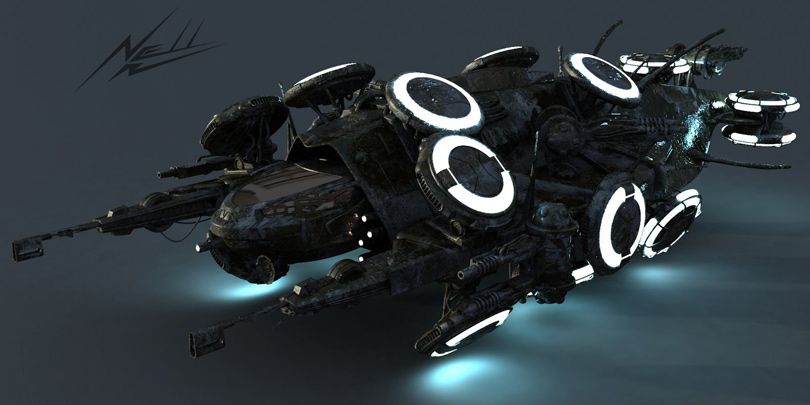Imagine the joy of blazing a trail in your stories, writing about something nobody has attempted before. Consider the electric thrill when you’re creating, in fiction, a new type of vehicle for your characters (and, by extension, for your readers).
Vehicles hold a special place for all of us, don’t they? The machines that transport us also shield us from the harsh outer world while cocooning us in comparative comfort. They move along at our command, heedless of distance or obstacles, and some of them convey us through places in which our frail bodies wouldn’t survive.
Today I highlight the pioneering fiction vehicles, the ones first taking readers through a particular environment. Look elsewhere for a list of the most popular, or the coolest-looking, etc. Here I’m focusing on the first, the pioneers, and we’ll proceed in chronological order.
First Flying Vehicle
The Hindu text R?m?ya?a, dating from between 600 BCE to 200 CE, mentions gods and demigods flying around in Vim?na. These vehicles take various forms, including flying palaces and chariots. I found no evidence online that these vim?na carried mortal people, or that they traveled in outer space. Still, a flying palace seven stories high sounds great to me. Not all gods owned them, apparently, and some of these vehicles lacked anti-theft devices. Ravana stole one from Kubera, but Rama recovered and returned it.
First Underwater Vehicle
The same character—Alexander the Great—piloted the next two vehicles on my list. Though a real historical figure, Alexander also got fictionalized in a series of tales now called the Alexander Romances. Widely read and translated, they originated in Ancient Greece before 338 AD, but spread across Europe and Asia, changing with every retelling over hundreds of years. One of these tales took him underwater in a glass diving bell lowered from a ship. I’ve written my own fictional account of this trip in my story, Alexander’s Odyssey.
First Flying Vehicle for Mortals
Alexander the Great also flew in the air, according to another tale from the Alexander Romances. He harnessed two griffins to a chair in which he sat. He steered the craft by tempting the griffins with meat on skewers so they’d fly in his intended direction. You can never find griffins when you need them these days, forcing us to fly by airplane.
First Space Vehicle
The first purposeful aerial vehicle in fiction belongs, I believe, to Francis Godwin, who wrote The Man in the Moone, published in 1638. (I’m discounting True History by Lucian of Samosata, since his ship flew by accident.) In Godwin’s tale, his hero, Domingo Gonsales, trained a flock of swans and hitched them to a framework, allowing him to fly. Unaware that these swans periodically migrated to the moon, he ended up there. Little wonder his contraption didn’t catch on—he’s sitting on a slender pole.
First Time-Traveling Vehicle
If you’d care to travel through time, step aboard the conveyance from the 1846 novel Le Monde Tel Qu’il Sera [The World As It Will Be] by Emile Souvestre. This steam-powered locomotive flew through space and time. (And you thought the flying, time-traveling locomotive in the movie Back to the Future III was innovative!) The seat looks comfortable, but it’s atop the locomotive’s boiler, just forward of the smoke-stack—a rather warm ride.
First Multiple-Environment Vehicle

So far I’ve mentioned travel in no more than two modes–air and space, space and time. But the Terror from Jules Verne’s 1904 novel Master of the World combined boat, submarine, automobile, and aircraft. The police might catch you speeding and give chase, but they’d never be able to pull you over. Not available yet for purchase, but my name’s on the waiting list.
First Underground Vehicle

If you’d like to travel underground in style, you’ll need the Iron Mole from Edgar Rice Burroughs’ 1914 novel, At the Earth’s Core. Perhaps you’d better wait until someone develops a steering mechanism for the machine, though. The novel’s heroes couldn’t steer it and they dug down 500 miles and found Pellucidar.
First Intense-Gravity Exploration Vehicle

When someone asks if you’d like to travel to a neutron star (if I had a nickel for every time…) just say no. The intense gravity creates massive tidal forces within any approaching ship. The character in Larry Nivens’ short story “Neutron Star,” published in 1966 (before evidence of neutron stars existed) said yes to the question. He traveled in a spaceship called the Skydiver, a transparent, spindle-shaped vessel.
First Solar Exploration Vehicle
Most of us enjoy vacations where we can get a little sun. But we draw the line at traveling to the sun. I’ve heard of hot travel destinations, but that one melts the cake. The characters in David Brin’s 1980 novel Sundiver make the trip aboard a spherical vehicle called the Sundiver, which enables them to get close enough to the extreme heat. Seems to me they could have saved themselves a lot of trouble by going at night.
First Cyberspace Vehicle
Traveling to the Matrix might seem difficult, but not if you step aboard Nebuchadnezzar, the hovercraft ship from the 1999 movie, The Matrix. In case you’ve forgotten, the matrix is the “simulated reality world” fed into human minds, a sort of dream world far different from the dystopian present. (Yes, I know the 1982 movie Tron included cyberspace vehicles, but they couldn’t travel between cyberspace and real space, as Nebuchadnezzar could.)
Conclusion
If I’ve left out a pioneering vehicle, or if a vehicle predates one or more on my list, let me know. To qualify, a vehicle must travel within an environment or element no other fictional vehicle has traversed before.
If you enjoy writing about fictional vehicles, don’t despair that it’s too late to write a story about a pioneering vehicle. See my blogpost about pioneers and giants. If you can’t be a pioneer, you can still be a giant. For a discussion about how to deal with fictional vehicles in your stories, stay tuned for a future blogpost by—
Poseidon’s Scribe







